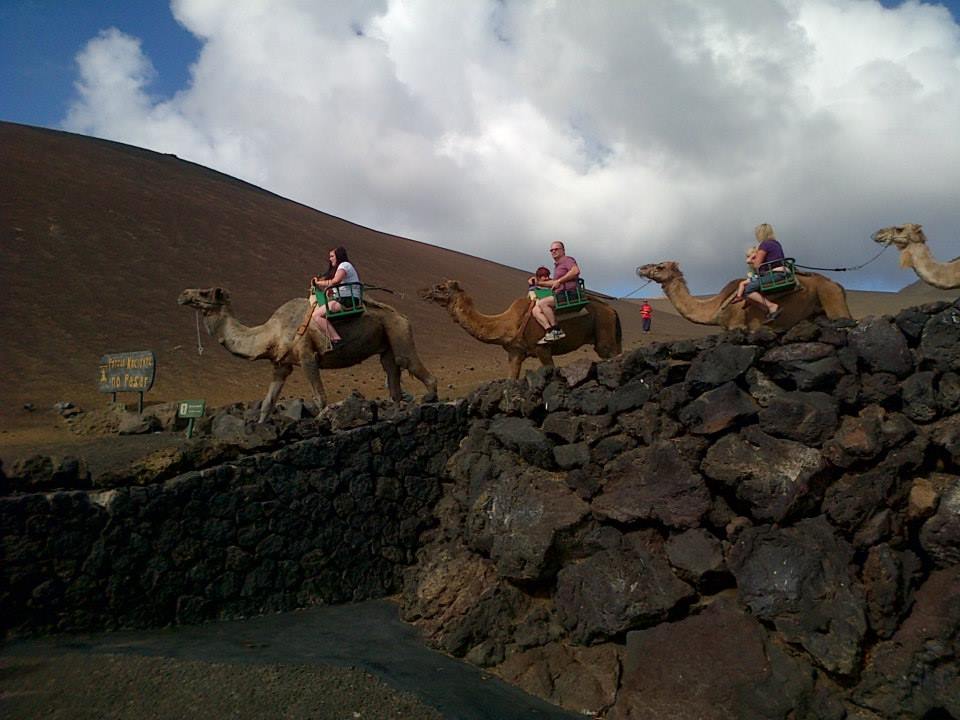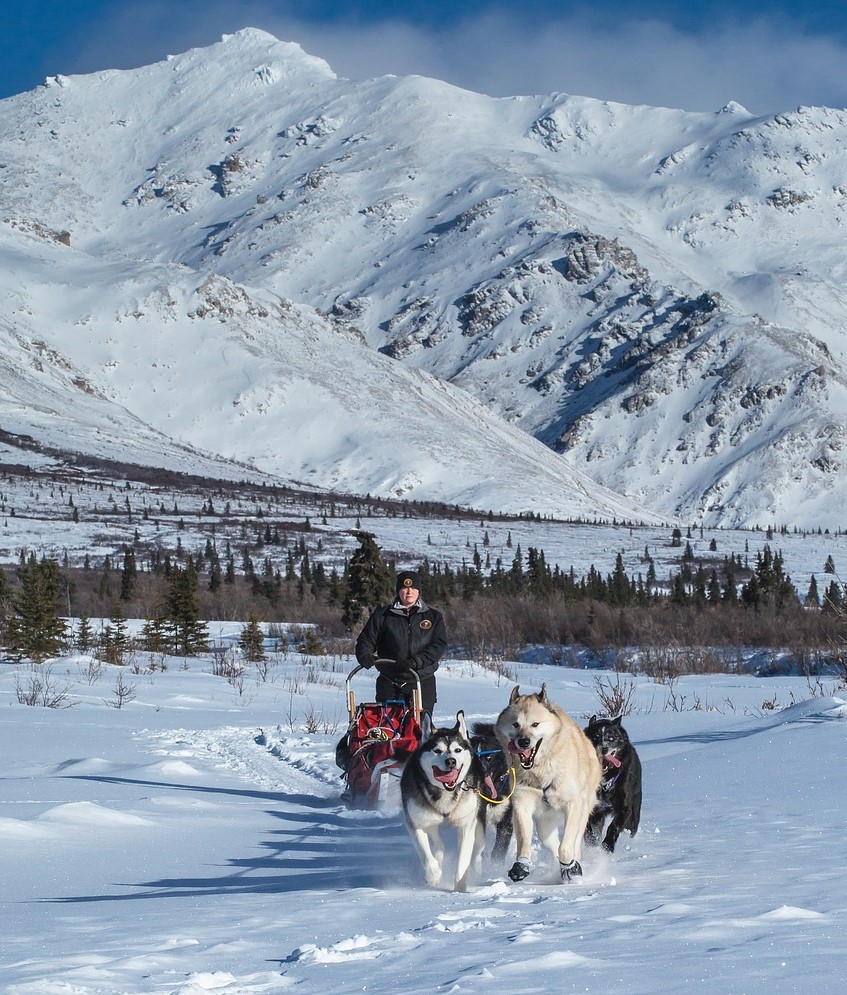As the wet, windy and dark evenings of October in Yorkshire encroached on my friends and family back home, I couldn’t have felt as satisfied and content as I did on the evening of 23rd October as I sat bare-legged and barefooted on the sands of playa de los Charcos, the quieter beach of the three in Costa Teguise, Lanzarote. The moment, a snapshot in my memory as a very nearly perfect moment as just me and my daughter relaxed alone on the beach, the bleached white sands accentuating the colour of our tanning skin.
As I am usually active at home, I planned on a relaxing holiday; but there was plenty of action going on. Playa Los Curachas on the Costa Teguise is famous for windsurfing and other water sports. Personally I would have liked to have done one of the cycling excursions, where a local company would pick you up from your accommodation, hire you a bike and take you on a pre-set cycle route. This would have been an excellent way to have seen the sights inland. A Polish family I met recommended beaches on the South of the Island for surfing and body boarding. These beaches are wide and long and very much like the beaches on the coasts of other nations bordering the Atlantic Ocean such as France and Portugal. To see the North of the Island hiring a car is of course an option, however the Island boasts a very reliable and frequent public bus service. The buses go from Arrecife to Porto Del Carmen every 30 minutes, 24 hours a day – now that is impressive service! Lanzarote, like the other Canary Islands, is Spanish and you should bear this in mind if shopping is your thing. Arrecife is the main shopping centre but opening hours are determined by the traditional siesta. Opening hours in Arrecife are strictly 9am until 1pm and then 5pm until 8 or 9pm. The shops and attractions are more often than not closed on Saturday afternoon and Sundays, throughout the Island but especially in the capital.
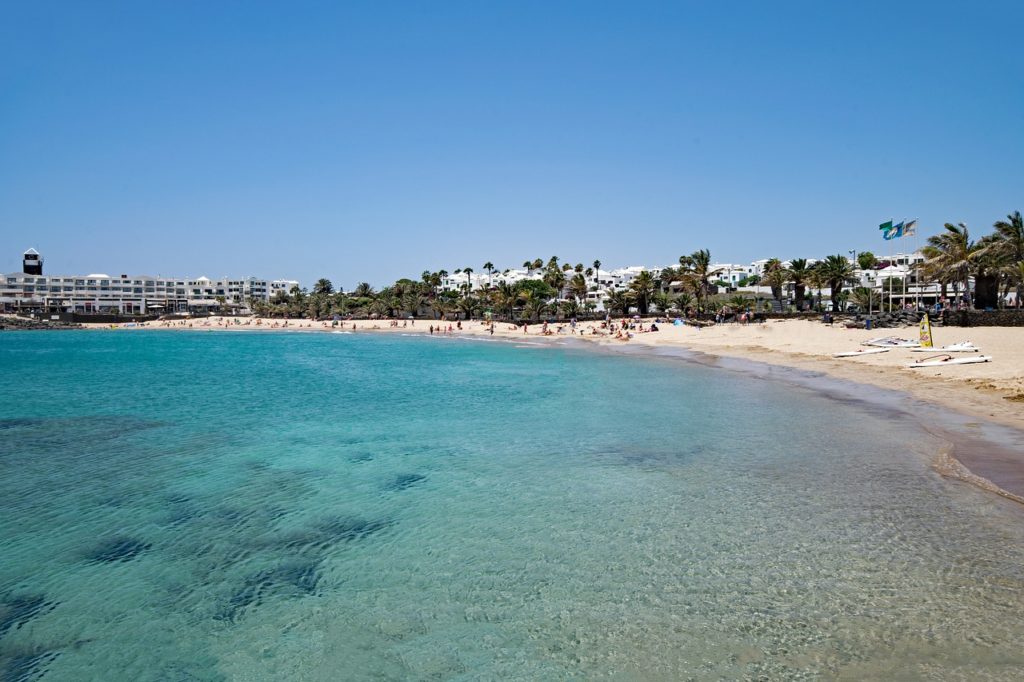
Our view: the sky awash with the pale hues of pinks, lilacs and blues, a medley of pastel shades created by the setting sun. Such beauty heavily punctuated by the foreboding black of the volcanic rock which edged the beach, a constant reminder of the volcanic nature of the Island which has shaped the landscape and the lives of the people of Lanzarote for centuries.
In choosing a wintery holiday destination the lure of the Canary Islands mild year long climate made it a natural contender. As the first trip abroad on my own as a single parent, I chose Lanzarote as articles and recommendations of the Island promised interesting attractions, night time entertainment and value for money. I knew the days would be fine, playing in the apartment’s pool or enjoying the beach, but I worried that we would be stuck for things to do on a night. I needn’t have worried. The Island’s main industry is the tourist industry so there’s always plenty going on and this makes it the perfect option if you happen to be on a budget as I was. There are hundreds of bars and restaurants competing for custom. Outside pretty much every eatery there were chalkboards advertising set lunch menus for less than ten Euros, full English breakfasts for €2.50 and drinks offers that could satisfy the needs of the most hardened drinkers. My favourite place to eat was Pablo’s restarante Canario & Internacional, situated in the Encargado Terraza in Costa Teguise. The restaurant offered many dishes, as its name suggests, both traditional and international. I opted for Gnocci and a delightfully decorated plate of profiteroles for dessert; my daughter stuck with the seven year old connoisseur’s choice of chicken nuggets and chips and chocolate ice-cream. I just loved the Romanesque decor of the place, one wall was completely covered in leaves and faux -stone statues and columns were randomly dotted between tables. But, what made it extra special for me, was hearing the unexpected tinkling tones of well known, easy listening tunes being played on a Grand Piano.
There is no doubt that Lanzarote as an Island has developed towards the needs of the tourist industry, especially holiday makers from Spain, the UK, Germany and other Western European destinations. However, what makes Lanzarote unique is that one man foresaw the effect that the tourist industry would have on the culture of the Island and fought for the implementation of measures to maintain the natural treasures and traditional architecture of the Island. Apart from the one building in the centre of the Island’s capital Arrecife; you will not see another building that is over 5 storeys high. This can be attributed to the abstract artist Cesar Manrique who passionately believed that Lanzarote had more to offer the traveller than just its mild climate; it has a unique landscape and noteworthy history. There are no billboards or unsightly overhead cables littering the landscape, just miles of arid land coated in ancient volcanic ash and pretty, low-rise houses painted in white and beige. The amount of attractions dedicated to and created by Manrique indicates how proud the people of Lanzarote are that a world famous artist cared enough to preserve the aesthetic appearance and culture of the Island.
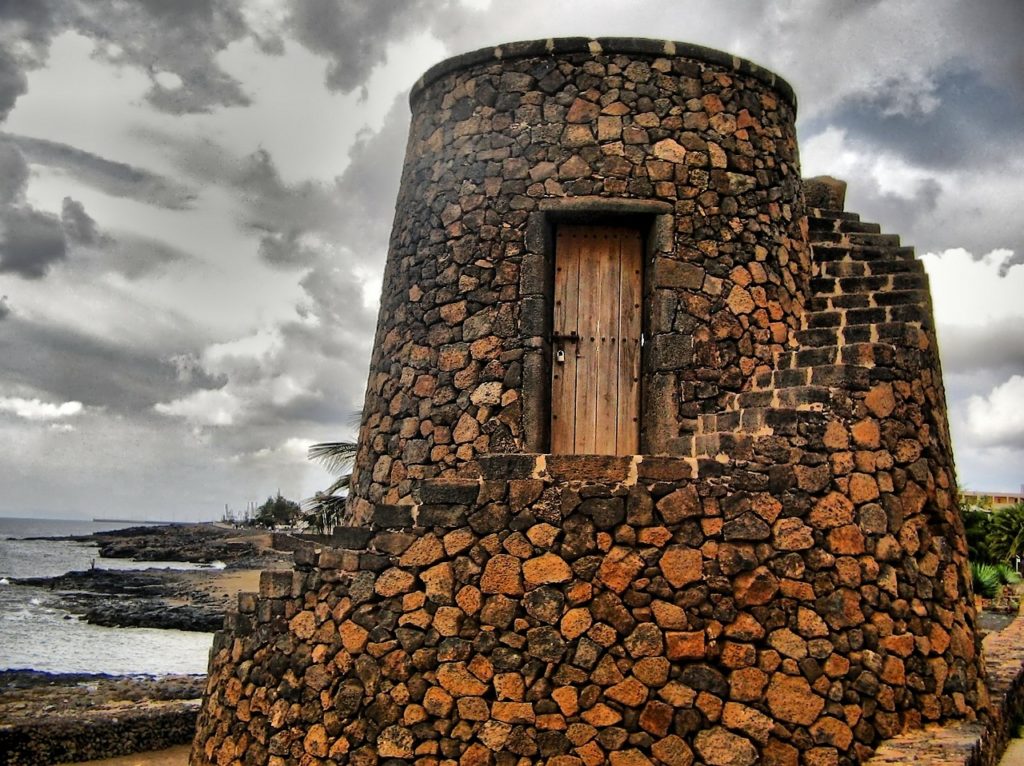
To see the Island I chose to use a local tour company called Last Minute tours which offer organised excursions to the attractions on the Island. Their tours vary to suit time and budget constraints; one tour I went for was the south short tour. This cost €36 for one adult and a child and included a trip to the Timanfaya national park, camel ride and a visit to one of the Island’s wineries for a spot of wine tasting. It is no wonder that Manrique chose a devil as the Island’s emblem as all of the mountains on Lanzarote are in fact Volcanoes. Timanfaya national park is a visitor centre and restaurant exhibiting the volcanic nature of the Island. To demonstrate the immense heat of the volcanoes one of the guides gave each of the visitors a handful of gravel picked from the ground. It was so hot that it could only be held for a moment before being dropped to the ground. The heat is intense enough that some of the food served in the restaurant is actually cooked over a hole in the ground (although some heat is piped in from elsewhere just to speed up the cooking process!). To preserve the natural beauty of the park it is only possible to view the gigantic craters of long since active volcanoes by coach tour. It is well worth a go but not for the feint hearted as the roads are narrow, steep and gravelly. The shades of burnt reds and oranges visible in the volcanic ash are astounding. Other than by coach the only way to travel across the ash is of course by camel. Short camel rides are available at the national park for €6 each. The nearby village of Yaiza is supported by the income generated by the camels so there are strict rules that the camel owners are subjected to, such as a licence and insurance and the camel’s are only allowed to do four walks each, to make it a fair and steady income for the owners.
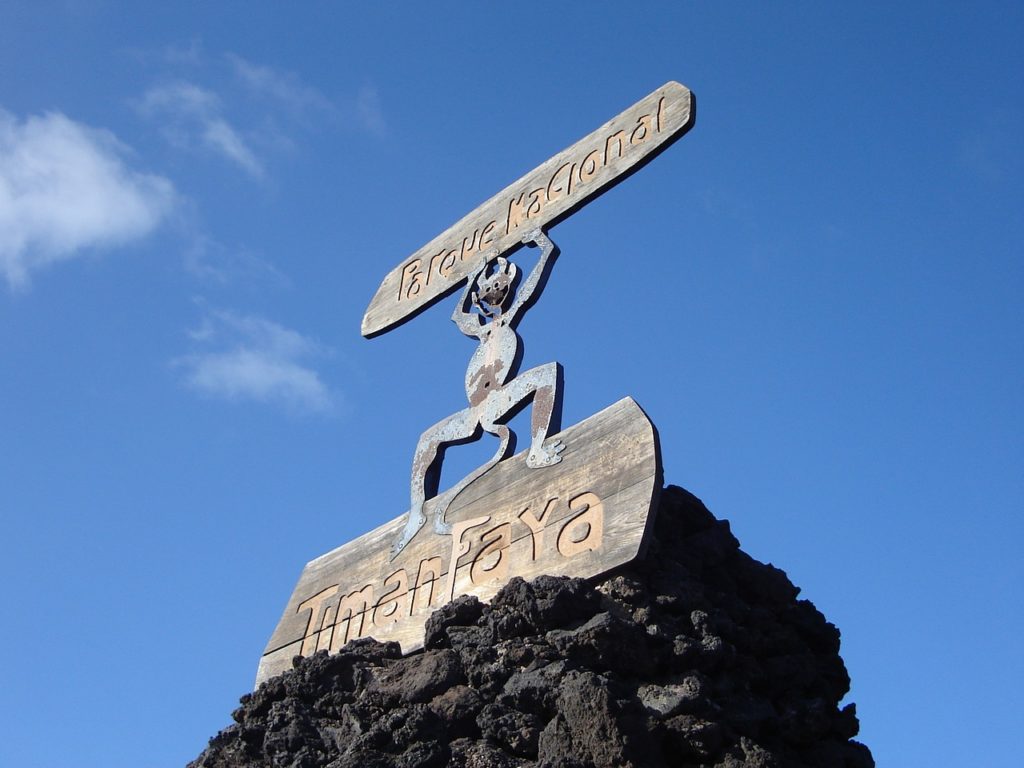
The tour encompassed the volcanic nature of the Island and just how the people have had to adapt to survive in a place with such an arid landscape. The climate and amount of land suitable for cultivation means that the Island can only provide enough food to support 1/3 of the Island’s 141,000 inhabitants, never mind the influx of tourists! This means that the majority of fruit and vegetables are shipped in on a morning ferry. From witnessing the severe lack of vegetation on the Island one wonders how on earth a thriving wine industry can be sustained, however this became very clear at the end of the tour. The Southern wine region of Lanzarote has the most unique man made landscape in the world. As far as the eye could see from the inside of the coach, there were small, man made craters, carefully dug by farmers to find the fruitful soil hidden under layers of harsh volcanic ash. Nestled in these holes and carefully protected by the ever present breeze by hand built dry-stone walls are well-maintained vines, surviving under the most challenging conditions. The tour guide proudly asserted, and rightly so, that this proved that the people of Lanzarote could be described as laid back, but never lazy. I wasn’t overly keen on the Malveria Seco, an extremely dry tasting white wine for my sweet tooth that was tasted at the Vino El Campesino. I did however enjoy the Moscatel, a cross between a liqueur and a wine, which was peachy and warming.
Travelling alone with a child, feeling safe and relaxed whilst abroad was a significant concern for me. I felt extremely safe, mainly because it is clear that most people are visiting the Island for the same reasons, to enjoy the sun and sand and have a relaxing break away. The tour guide for last minute tours said there was nowhere on the Island that he would say couldn’t be visited at any time of day. What was noticeable to me is that the Islanders are sincere and genuinely make you feel welcome, especially the children. In Costa Teguise alone I can note at least two lovely parks that kept my daughter well amused when she’d had enough of me lazing around the pool.
So, if you want a winter holiday that offers the weather to soak up the sun’s rays and top up those vitamin D levels before the dark winters set in in Northern Europe, but you also want some where offering an aesthetically alluring landscape and plenty of action then Lanzarote is definitely a location to keep at the forefront of your mind.


